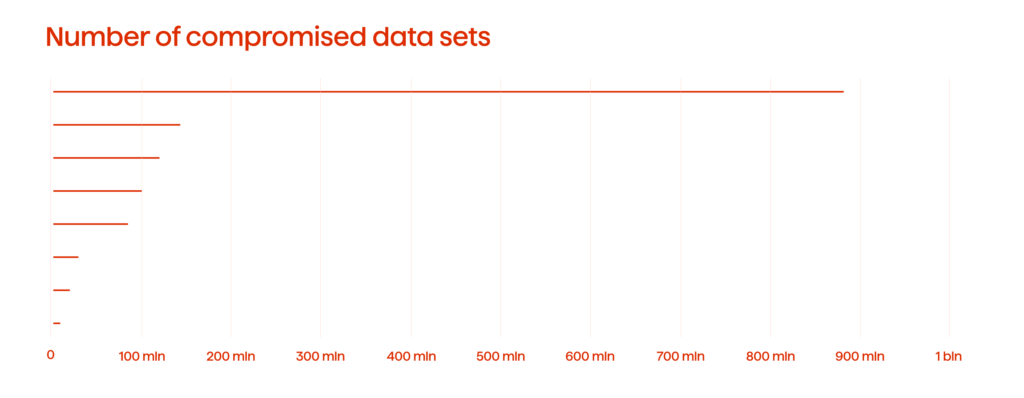How Open APIs Reshape Banking Services

April 28, 2025 7 min read
Banking APIs are changing the banking landscape for good
Application Programming Interfaces (APIs) play a key role in the digital transformation of financial services. According to a report, the API management market was valued at $5.3 billion in 2023 and is expected to have a compound growth annual rate (CAGR) of 32.9% in the upcoming years.
APIs provide a customer-centric approach, driving innovation in traditional banking. They promise secure and efficient financial transactions that cater to each customer’s unique needs and aspirations.
This piece explores the reshaping power of open APIs in the banking sector. Let’s discover the ins and outs of the phenomenon. Simply put, the more one understands open APIs, the more benefit one can get from them.
Open Banking and API Landscape
The financial landscape is being reshaped with open banking. And it is revolutionized by APIs. Such a transformative movement redefines economic data sharing and service delivery. It paves the way for interconnected and innovative banking ecosystems to emerge.
The Advent of Open Banking
Open banking marks a new era in finance. Now, banks share data through APIs. This paradigm promotes transparency as well as introduces a new way toward consumer empowerment and customized financial services.
More and more banks and financial institutions understand that and adopt an open banking philosophy and solutions (see Figure 1).

Open banking gives consumers more control and freedom over their financial data. Financial institutions can offer customized services and products using open APIs. APIs help meet customers’ diverse financial needs. For example, with open banking APIs, a customer’s bank can permit third-party providers to aggregate that individual’s financial data across multiple institutions, offering a consolidated view of finances or suggesting better financial products.
Regulations such as the Payment Services Directive 2 (PSD2) in the European Union significantly influence the drive towards open banking. PSD2 compels banks to allow secure access to customer financial data for authorized third-party providers with customer consent. The regulatory push complements the financial industry’s data-sharing and technical API standards. This ensures effective and safe interaction for all parties.
Open banking is moving from concept to reality, facilitated by API technology and driven by regulatory mandates. It reshapes banking to create a future with more personalized and accessible financial services. The services will seamlessly integrate into consumers’ digital lives.
The Pivotal Role of APIs
At the core of open banking lies the API. It is a foundational technology enabling this financial revolution. APIs enable secure data exchange between banks and third-party providers. To illustrate, APIs serve as secure messengers, allowing banks to transmit customer financial data to authorized third-party apps for services like budgeting and investing. It’s like giving a key to a trusted friend to access your shared space safely.
APIs are crucial for open banking. They enable easy connections between banks, fintech, and other services. APIs define software interaction protocols, enabling the sharing of banking data. This data helps create innovative financial services. For instance, a bank’s API could allow fintech companies to initiate payments on behalf of customers directly from their financial accounts, streamlining the payment process and offering enhanced customer convenience.
APIs are assets driving growth and innovation in banking. They are crucial for building open banking. And their importance will increase as the API banking market grows.
Benefits of Banking APIs
Banking APIs offer many benefits, such as establishing new customer engagement and financial innovation standards. The APIs simplify operations. That is vital for two key aspects – better customer experience and going toe-to-toe with the ever-changing economic landscape.
Enhanced Customer Experience
Banks use APIs for personalized digital interactions to add a degree of convenience. APIs enable features like financial dashboards that allow people using financial services to manage their money in one place.
The Financial Brand study found that 72% of customers expect personalized services from their banks. This anticipation of personalized banking journeys exemplifies the shift in consumer behavior and the need for banks to respond proactively through API integration.
Innovation and Service Creation
APIs have enabled new services like streamlined loan approvals and real-time expense tracking. For instance, BBVA, a pioneer in banking, used APIs to create a global digital payments system. API-driven product development shows how collaborations transform, creating innovative services that redefine the customer experience.
APIs propel the banking industry forward, drive service innovation, and establish a new ecosystem where continuous value creation is possible through collaborative ventures.
Strategic API Models in Banking Services
In fintech, APIs catalyze efficiency and market expansion, beyond being technological tools. Their deployment within financial institutions signifies a commitment to innovation and future-proof operations.
Internal APIs for Operational Efficiency
Internal APIs in banking connect old systems to new apps for tasks like fraud detection. This integration aids real-time service. The APIs reduce operational overhead and boost financial services agility. For instance, banks implementing internal APIs for credit assessments can streamline application processes, leading to measurable cost savings and a quicker turnaround for customers.
External APIs for Ecosystem Expansion
Open APIs help payment systems evolve. Banks collaborate with fintech companies to offer direct account-to-account transfers. An exemplary use of external APIs is seen in the collaboration between incumbent banks and payment initiation service providers (PISPs), which enables secure and direct online payments, bypassing traditional card networks and reducing transaction fees.
External APIs facilitate innovation and collaboration, supporting growth in the digital economy. They meet evolving service needs.
Challenges and Considerations
Integrating open banking APIs brings innovation but also comes with challenges. Figuring around the workarounds within these obstacles is pivotal in ensuring the sustainability and security of the API-driven banking transformation.
Here are the challenges one should mention:
Legacy System Integration
Many financial institutions struggle to integrate modern APIs into their aging banking infrastructures. These older systems are often resistant to change, which makes the process of updating them to be API-compatible both complex and resource-intensive.
However, banks are taking proactive steps to modernize their systems by investing in technology upgrades and partnering with fintech companies to bridge the gap between old and new. Some central banks have successfully launched digital-only branches built on modern tech stacks that seamlessly integrate with APIs, indicating a promising direction for the industry.
Data Security and Privacy Compliance
As open banking APIs become more common, protecting customer data and complying with privacy regulations is more important than ever. Banks need to balance encouraging innovation while carefully safeguarding sensitive information. This presents the utmost importance considering the scale of data breaches in the financial sector (see Figure 2).

The financial industry must take extra precautions to meet GDPR and DORA. They must encrypt API traffic, regularly audit access controls, and establish clear data usage policies. This has led to the creation of advanced security solutions like tokenization and dedicated API gateways to secure customer data handling.
To stay successful in this new era of open banking, banks must create an environment that fosters innovation without compromising security or privacy. This is essential to maintain customer trust in the long run.
Conclusion
The journey through open banking shows APIs are keystones of a banking renaissance. From enhancing customer experiences to pioneering new services, APIs have demonstrated their transformative power.
The banking sector is evolving due to dynamic interfaces. Growth and innovation potential seem limitless. The future of banking, underpinned by APIs, holds the promise of a more inclusive, responsive, and interconnected financial ecosystem.
Contact our experts to understand better the crucial role APIs play in banking services. This can be a game-changer when implemented by people with tons of expertise.



